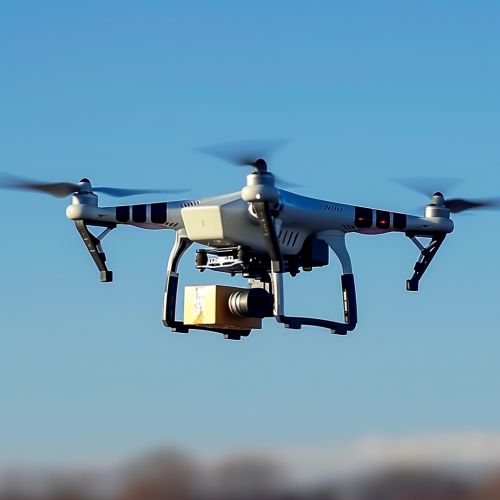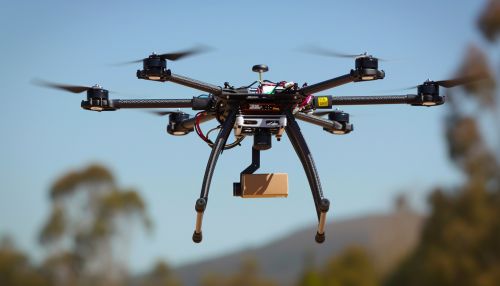Drone Delivery
Overview
Drone delivery is a method of transporting goods using unmanned aerial vehicles (UAVs), commonly known as drones. This method of delivery has gained significant attention in recent years due to its potential to revolutionize the logistics and transportation industry.


History
The concept of drone delivery has been around since the early 20th century, but it wasn't until the advent of modern technology that it became a feasible option. The first known delivery by drone took place in 2013, when a Dominos Pizza franchise in the UK demonstrated a delivery drone they called the "DomiCopter."
Technology
Drone delivery relies on a variety of technologies, including GPS for navigation, computer vision for obstacle detection and avoidance, and advanced flight control systems to maintain stability and control during flight.
Types of Drones Used in Delivery
There are primarily two types of drones used for delivery purposes: fixed-wing drones and multi-rotor drones. Fixed-wing drones are typically used for long-distance deliveries due to their high speed and energy efficiency, while multi-rotor drones are used for short-distance deliveries due to their ability to hover and land vertically.
Applications
Drone delivery has a wide range of applications, from delivering consumer goods and food to transporting medical supplies and other critical items. Companies like Amazon, Google, and UPS are actively developing and testing drone delivery systems.
Benefits
Drone delivery offers several benefits over traditional delivery methods. These include increased speed and efficiency, reduced cost, and the ability to reach remote or difficult-to-access areas. Additionally, drone delivery has the potential to reduce traffic congestion and carbon emissions by replacing traditional delivery vehicles.
Challenges and Limitations
Despite its potential, drone delivery also faces several challenges and limitations. These include regulatory hurdles, safety and privacy concerns, technical challenges, and weather conditions. For example, drones are currently not allowed to fly beyond the visual line of sight (BVLOS) of the operator in many countries, which limits their range and effectiveness.
Future Prospects
The future of drone delivery looks promising, with advancements in technology and changes in regulations potentially paving the way for widespread adoption. However, it will likely take several years before drone delivery becomes a common sight in our skies.
